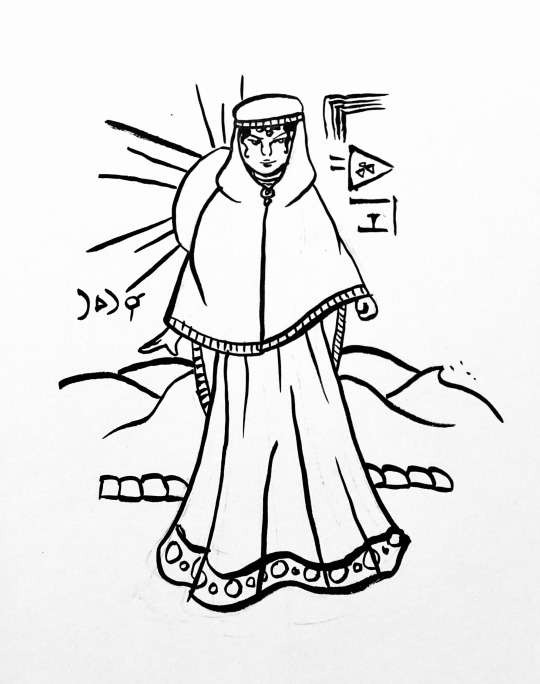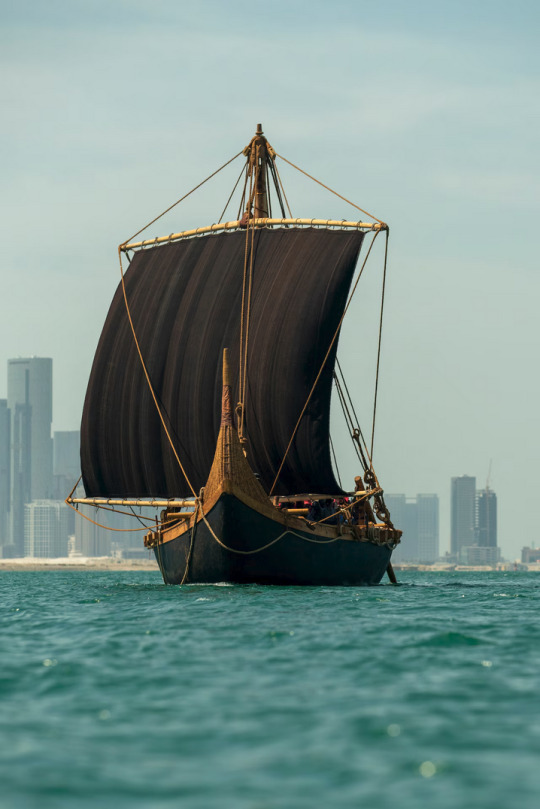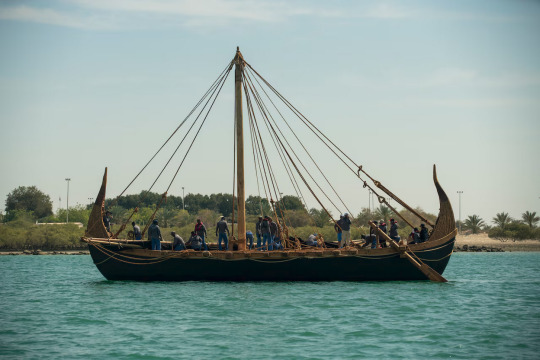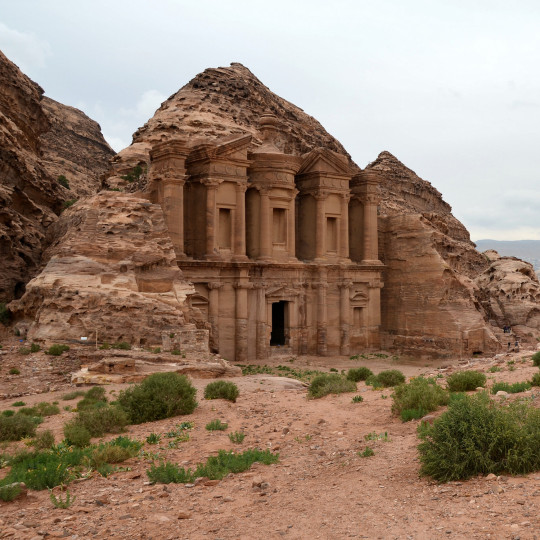#arabian history
Explore tagged Tumblr posts
Text
Who was Allah before Islam?, with Ahmad Al-Jallad

A conversation with Ahmad Al-Jallad about the languages and inscriptions of pre-Islamic Arabia, our main contemporary source for life, death, and worship before the time of the Prophet Muhammad. We talk about field surveys in search of inscriptions and what they tell us about Allah and other Arabian deities in the early centuries of the first millennium.
Click here to listen
29 notes
·
View notes
Text

Funeral stele (fragment). Saudi Arabia, 12th to 13th Century CE.
The Louvre.
#the louvre#saudi arabia#Arabia#Arabian history#art#culture#sculpture#history#medieval history#medieval#middle eastern history#Middle Ages#museum#stone
64 notes
·
View notes
Text

Day 30: Šamši!
Šamši was queen of the Qedarites, a group of ancient Arabian tribes who had become confederated under one leader, during the 8th century BC. Queens were not unusual among them; indeed, Šamši’s predecessor and successor were both women. Šamši’s people were vassals of the powerful Assyrian Empire, but Šamši dreamed of independence. When a number of vassal kingdoms, led by Rezin of Damascus, rebelled, she quickly joined their alliance against Assyria’s expansionist (and, they hoped, therefore distracted) king, Tiglath-Pileser III.
When the king turned his attention to the rebel Qedarites, Šamši stood and fought, but her army was staunchly defeated. The survivors, their Queen among them, attempted to retreat, but Šamši was captured and taken before Tiglath-Pileser. It may have been Šamši’s diplomacy, the king’s chivalry, or simply the realpolitik of running a burgeoning empire, but Šamši was restored, conditionally, to her throne. Her people would survive.
(Very rough day, very simple drawing)
#šamši#sâmsi#arabian history#assyria#history#awesome ladies of history#october 2023#my art#pen and ink#brush pen
23 notes
·
View notes
Text
Love this kind of historical reconstruction.

For the first time in millennia, a Magan Boat sails off the coast of Abu Dhabi. It’s a reconstruction that has taught the world much about the skill and achievements of Bronze Age sailors
Archaeology on Marawah Island, west of Abu Dhabi, has revealed that 8,000 years ago the Arabian coast was home to a sophisticated seafaring people. They built stone structures, herded livestock, fished and dived for pearls, crafted jewelry, and developed a talent for sailing that started a remarkable cultural exchange.
By the Bronze Age, around 4,500 years ago, the region was prominent enough to have a name in ancient writings: Magan. From the island of Umm an-Nar, in modern Abu Dhabi which was part of ancient Magan, merchants sailed an international trade route that connected Mesopotamia, in what is now Iraq, to the Indus Valley in today’s India and Pakistan. Magan traded locally sourced pearls, stone and copper, one of the most sought-after commodities of the time, for ceramics, fabrics, jewelry, and other precious objects. Its ships were renowned through the Arabian Gulf.

The ship was built using 15 tons of locally sourced reeds that were painstakingly prepared by being soaked, stripped of leaves, crushed, and then tied into bundles using rope made from date palm fibers. These formed the hull, to which was attached a wooden frame. The boat’s dimensions were calculated based on what is known about similar vessels as well as hydrostatic analysis of what was needed to make it float. The reed hull was then waterproofed with a coating of bitumen, which was traded from Iraq. The heavy sail, raised purely by muscle without the benefit of pulleys, was crafted of goat’s hair in a patchwork of shades.
The result was the world’s largest ever reconstructed Bronze Age vessel: 60 feet long, capable of carrying 36 tons of cargo, and achieving surprisingly high speeds of 5.6 knots.
3K notes
·
View notes
Text
From the Sands of Arabia to the Shores of the Atlantic: The Saga of the Umayyad Caliphate
Origins: A Powerful Clan in Pre-Islamic Arabia Long before the rise of Islam, the Umayyads—also known as Banu Umayya—had carved out a privileged position in Arabian society. They were a leading clan of the Quraysh tribe, the dominant tribe in the holy city of Mecca. By the late 6th century, Mecca had become a thriving commercial hub and pilgrimage center, and the Umayyads controlled many of its…
0 notes
Text

Al Arabi مجلة العربي (Kuwait Magazine) #211, 1976
#al arabi#العربي#kuwait#saudi arabia#middle east#islam#arabic#arab#arabian#moors#moorish#culture#history#magazines#books#1970's#📖#🇰🇼
1K notes
·
View notes
Text

The Visit of the Queen of Sheba to King Solomon by Edward John Poynter
#edward john poynter#edward poynter#art#queen sheba#king solomon#solomon#biblical art#bible#architecture#temple#solomon's temple#israelites#israelite#jewish#history#jerusalem#israel#christianity#christian#old testament#asia#hebrew#judaism#arabia#arabian#columns#monkeys#birds#lions#monkey
245 notes
·
View notes
Text
You mean Jews are from Judea,
And Arabs are from Arabia??
Say it ain't so!
"Jews are not native to Israel, they're colonizers!!!" ok, tell me then:
what does the word Judaism references? what's the meaning of the word diaspora, and and then where are diaspora Jews really from? when was Jerusalem built? what was the name of the region Israel and Palestine are on currently 3000 years ago? what is the "promised land" from the story of the exodus? where does the story of Chanukkah take place? what do people say during Jewish marriage ceremonies? what would DNA results show for ancestry of Jews who are not recent converts (ashkenazi, mizrahi, and Sephardi)? what do the 7 species represent? what were the major groups present in Palestine for the past 2000 years? where was Hebrew first developed as a language?
isn't even 1 of these enough for you to understand that Jews have a connection to the land? come ON.
572 notes
·
View notes
Text
I am regularly annoyed at AI generated art, but I think nothing compares to doing researches of traditional clothes and only finding sexualised AI stuff that is most definitely not traditional apparel.
#that's not counting on disney's own shitty influence#try looking for arabian or native clothes and you WILL find far too much children costumes#gonna have to start doing it the good old way:#buy encyclopaedias and history books at the bookshop#mindless rambling#art
160 notes
·
View notes
Text

Illustrated Turkish Erotic Manuscript
#art#artists on tumblr#drawing#love#gay#sodomy#soft#arabian#arab#ottoman#turkey#turkish history#turk#islamic
198 notes
·
View notes
Text

Head ornament. Saudi Arabia. “Found” in 1975.
Very pretty. ❤️
The British Museum.
#the british museum#Arabia#saudi arabia#Arabian history#Saudi Arabian history#Saudi history#history#middle eastern history#art#culture#traditional clothing#headdress#style#modern history#museum#pretty
61 notes
·
View notes
Photo
Petra is another location I keep meaning to do more research on.

20 Images of Petra
This gallery showcases 20 photos of Petra (Jordan), the former capital of the Nabataean kingdom, which thrived as a trading centre from the 4th century BCE to the 3rd century CE.
Petra is an ancient city carved into a canyon by the Nabataeans, a tribe from Western Arabia skilled in trade and engineering. The ruins of Petra cover an area of 264 square kilometres and include sacred sculptures, monuments, and around 800 tombs, the most famous of which is known as the Treasury. The Treasury is believed to have been the mausoleum of Nabataean King Aretas III and dates back to the 1st century CE.
In 106 CE, the city of Petra was at its peak when the Roman emperor Trajan (r. 98-117 CE) annexed the Kingdom of Nabataea and transformed it into a Roman province named Arabia Petraea. The Romans adopted their city planning, and many new structures were built, including the Roman Soldier Tomb, the Sextius Florentinus Tomb, and the colonnaded street. Petra remained prosperous for over 250 years until the middle of the 4th century CE when an earthquake destroyed many of the city’s buildings.
Petra remained hidden for centuries until its rediscovery in 1812. Today, it is Jordan’s most renowned tourist attraction and continues to fascinate and inspire visitors from all over the world. It is known as the “Rose City” because of the colour of its stones, and it was designated as a UNESCO World Heritage Site in 1985. Its worldwide recognition was further amplified when it was declared one of the New Seven Wonders of the World in 2007.
Continue reading…
187 notes
·
View notes
Note
I get your point about how the eugenics thing you mentioned isn’t just Christianity because Islam does it too but Islam came after Christianity and incorporated a lot of its elements so I’d still blame Christianity there.
@gerardwaygirlmoments I don't know how to further explain to you that the extremely complicated history of how social justice language is utilized to give legitimacy to eugenics and ethnic cleansing is a phenomenon that took hold in it's modern form in the aftermath of the Nazi regime during the rise of the Soviet Union, and how the co-opting of this philosophy by the Arab League in the 1950s is the result of extremely nuanced geopolitical situations during the mid 20th century. I don't know how else to explain that Islam developed in the 600s CE and absolutely did not adopt a social justice framework for justifying eugenics under the guise of anti imperialism from late antiquity Christianity. And therefore that the fact that Islam developed out of Christianity and Judaism is completely irrelevant to the discussion of why modern social justice organizations around the entire world are now using the concepts of anti imperialism and decolonization to justify ethnic cleansing and genocide against minority populations in their countries.
Entire books have been written on this subject by people much smarter than me. I could recommend one if you are interested. But if you aren't then please just stop and admit to yourself that sometimes you don't have a great understanding of extremely niche subjects like "how anti imperialism became the justification for ethnic cleansing and violence against civilian populations around the world in every corner of the globe in all kinds of cultures" and admit that you're probably not going to learn about it because it is boring and hard and we can't all have a great understanding of everything and the subject isn't that personally relevant to you. I promise that doing this is much better than trying to shoehorn every problem in the entire world into a social framework that you read about on tumblr. Cultural Christianity can be a useful concept to discuss some phenomenon but trying to blame the phrase "decolonization is always a violent phenomenon" on pre-Islamic Christians in the 500s in the Arabian desert is not what cultural Christianity is supposed to apply to.
#china is not and has never been Christian islamic or Jewish and guess what they are also using anti imperialism and#decolonization to justify ethnically cleansing the Uyghur Muslim minority#not everything on the planet is caused by cultural Christianity#and trying to trace back concepts of anti imperialism and decolonization as justifications for ethnic cleansing#back to the birth of islam in the 600s in the Arabian peninsula#instead of to it's actual much more relevant modern roots concerning the cold war and the soviet union and modern philosophers#exploring different ideas regarding racial liberation in the 20th century#is just. i dont even know what to say. can anyone just admit sometimes that they arent that educated on something#instead of making illogical leaps between different periods of history that have so little to do with each other that#trying to connect them borders on a conspiracy theory#gingerswagfreckles#antisemitism#leftist antisemitism#jumblr#cultural Christianity#and what cultural Christianity is not#not tagging the other concepts mentioned here bc it will just attract the eugenicists being discussed and im not interested in being called#a million slurs today
28 notes
·
View notes
Text


South Arabian Alabaster Abstract Head 1st century B.C. – 1st century A.D.
#South Arabian Alabaster Abstract Head#1st century B.C. – 1st century A.D.#alabaster#alabaster sculpture#ancient artifacts#archeology#archeolgst#history#history news#ancient history#ancient culture#ancient civilizations#ancient art#art history
65 notes
·
View notes
Text
Unveiling Petra: The Untold Legacy of the Nabataean Kingdom
Background and Early Origins The Nabataeans emerged from the vast, shifting sands of northwestern Arabia, a region where survival depended on mastering an unforgiving environment. In the early centuries before recorded history, small Arab tribes wandered the desert in search of water and pasture. These early peoples were defined by their intimate relationship with the arid landscape, where…
0 notes
Note


1988 Hamas Charter, Article 11 (link so anon can read its themself)
This is the law governing the land of Palestine in the Islamic Sharia and the same goes for any land the Moslems have conquered by force, because during the times of (Islamic) conquests, the Moslems consecrated these lands to Moslem generations till the Day of Judgement.
It happened like this: When the leaders of the Islamic armies conquered Syria and Iraq, they sent to the Caliph of the Moslems, Umar bin-el-Khatab, asking for his advice concerning the conquered land - whether they should divide it among the soldiers, or leave it for its owners, or what? After consultations and discussions between the Caliph [and his companions] it was decided... the real ownership of the land and the land itself, it should be consecrated for Moslem generations till Judgement Day. Those who are on the land, are there only to benefit from its fruit. This Waqf remains as long as earth and heaven remain.
AKA "Our ancestors conquered this land fair and square, and they called 'dibbs!' for eternity., so our 'dibbs!' still stands till the end of the world."
So, in conclusion: Arabs are from Arabia and Jews are from Judea--who knew?!
Palestinians are indigenous to Palestine.
Depending on your defenition, either completly false or true since 1964ish, but I'mma turn you to @mossadspypigeon because I haven't the strength to go through my history knowledge at 9:30 am, I am tired amigo
What's certain is that the jews are indigenous to Israel. no matter what definition you'd use (except the UN one who was made specifically to exclude us), we are indigenous here.
#antisemitism#leftist antisemitism#history revisionism#arabian history#arab colonialism#arab supremacy
103 notes
·
View notes